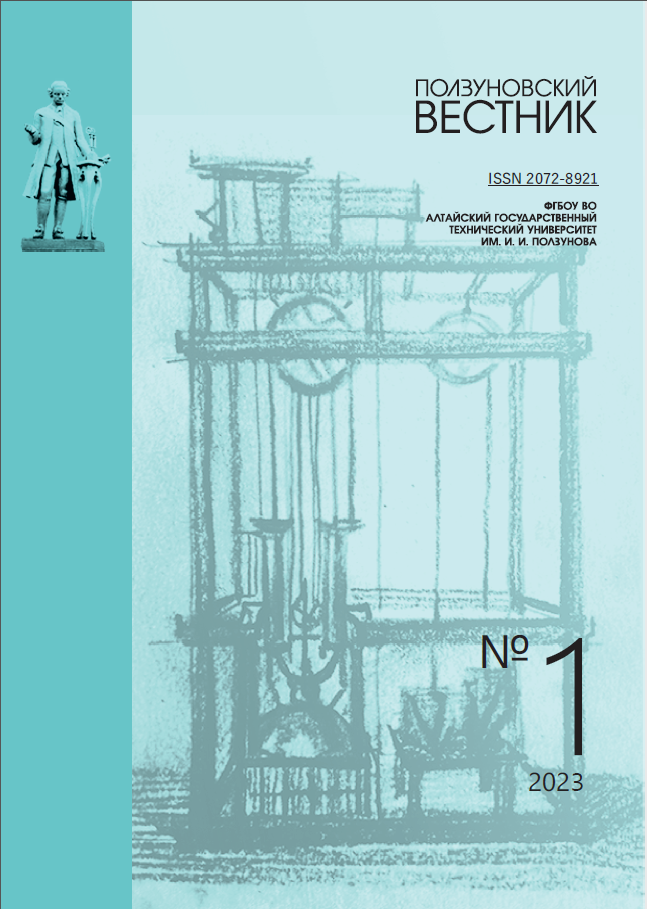DESALINATION OF GROUNDWATER USING MEMBRANE TECHNOLOGIES
FVUARK
DOI:
https://doi.org/10.25712/ASTU.2072-8921.2023.01.025Keywords:
natural waters of the Altai Territory, methods of desalination of mineralized waters, membrane methods, water treatment schemesAbstract
The paper considers the production of drinking-quality water using membran methods. The analysis of membrane methods of desalination of underground and surface natural waters using nanofiltration and reverse osmosis is given. The ways of optimizing the membrane separation of aqueous solutions, including the use of nanofiltration, are considered. Membranes and membrane apparatuses for the specified purposes are characterized. The experience of operating membrane installations in various natural conditions is given. A technological scheme of water treatment using a nanofiltration plant has been developed for one of the settlements of the Kulundinsky district of the Altai Territory. The scheme involves preliminary de-ironing with oxygen of the air in a storage aerated tank, filtering through a filter with a granular loading to remove iron hydroxide. In the future, the water is heated in a shell-and-tube heat exchanger 8 to 25 °C to reduce the viscosity, which directly affects the permeability of the membrane. After that, an antiscalantis then dosed to prevent the destruction of the membrane and is given to the nanofiltration unit. Nanofiltrationwas chosen because of the low concentration of impurities and, accordingly, the low osmotic pressure of the initial solution, which reduces the need for energy resources. Part of the concentrate circulates in the membrane module, allowing to increase the permeate yield, the other part returns to the bowels. At the final stage, the water is disinfected with ultraviolet light, after which it can be supplied to the network to supply consumers. The proposed scheme will allow to purify water up to the standards of SanPiN 1.2.3685-21 and provide the population with drinking water with the required flow rate of 1500 m3/day.
References
Кормаков В.И., Комарова Л.Ф. Водные ресурсы Алтайского края: использование, охрана. Монография. Барнаул : Изд-во АлтГТУ, 2007. 164 с.
Борзилов О.С. Оценка ресурсов подземных вод для целей аграрно-индустриального раз-вития Кулунды. Диссертация на соискание ученой степени кандидата сельскохозяйственных наук. Барнаул: Изд-во АГАУ, 2014. 184 с.
Заносова В.И., Молчанова Т.Я. Оценка качества подземных вод и степени их пригодности для орошения. Вестник АГАУ.2017, № 6 (152). С. 49–54.
Рябчиков Б.Е. Современная водоподготовка. М. : Изд-во ДеЛи плюс, 2013. 680 с.
Головесов В.А., Первов А.Г., Сухов Г.Д., Рудокова Г.Я. Влияние выбора антискаланта на величину эксплуатационных затрат для установок обратного осмоса. Вестник МГСУ, 2020, № 8. С. 1163–1174.
Боревский Г.В., Абрамов В.Ю., Вавичкин Л.Ю. Опытно-технологические исследования по водоподготовке некондиционных природных подземных вод // Разведка и охрана недр. №11, 2012. С. 26–31.
Кунденок С.Б., Попова Т.Ю., Медведь П.В. Индивидуальная технология водоподготовки артезианской воды со сложным составом примесей // Вестник ИШ ДВФУ, 2018. № 3 (36). С. 118–127.
Протасовский Е.М., Бубырев Д.И. Водо-проводная очистная станция подземной воды города Армянск Республики Крым // Вода и экология: проблемы и решения, 2018. № 1 (73). С. 17–21.
Головесов В.А., Рудакова Г.Я., Первов А.Г., Спицов Д.В. Выбор мембран и сервисных реагентов для мембранных установок, применяемых для обработки подземных вод // Вестник МГСУ. 2020, 311. С. 1556–1569.
Birm [Электронный ресурс]: Aquasolution.ru. Современные технологии очистки воды. URL: https://aquasolution.ru/birm (дата обращения 21.12.2022).
Мембрана CSM NE 8040-90[электронный ресурс]: оф. сайт Waterfilter URL: https://waterfilter.ru/catalog/membrany/membrana CSM_ne_8040_90 (дата обращения 15.01.2022).
Тимонин А.С. Инженерно-экологический справочник Т.1. Калуга : Изд-во Н. Бочкаревой, 2003. 884 с.
Downloads
Published
How to Cite
Issue
Section
License
Copyright (c) 2023 Larisa F. Komarova, Vladimir A. Somin, Dmitry A. Lapshin

This work is licensed under a Creative Commons Attribution 4.0 International License.















 .
. This work is licensed under a
This work is licensed under a 
